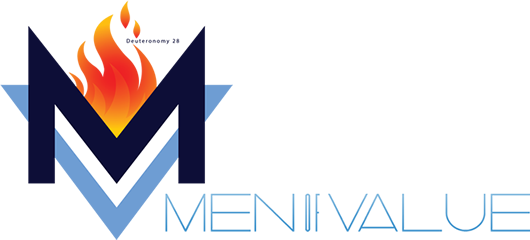Python The Versatile Programming Language For The Future

By
this language has emerged as one of the most popular and versatile programming languages in the world today.
What is Python?
Python is a high-level, interpreted programming language developed by Guido van Rossum and first released in 1991. Known for its clean and readable syntax, Python prioritizes simplicity, making it an excellent language for both newcomers and advanced coders. It supports multiple programming styles, including object-oriented, procedural, and functional programming, making it extremely flexible.
Importance:
Python’s importance is rising growing due to its adaptability and ease of use. The language is widely appreciated in both academic and professional environments because it allows for efficient coding, requiring fewer lines of code compared to many other languages, thus speeding up development and reducing the likelihood of errors.
It is used in various sectors, including web development, artificial intelligence, machine learning, data analysis, and scientific research, making it an essential tool for modern applications. In particular, Python’s powerful libraries such as Pandas, NumPy, and TensorFlow have revolutionized fields like data science and machine learning, making it the go-to language for working with large datasets and building intelligent models.
Advantages:
- Simple to Learn and Use: One of Python’s key strengths is its ease of learning. Its clear and concise syntax allows beginners to pick it up quickly, while its straightforward structure ensures that even experienced developers can write readable, maintainable code.
- Free and Open Source: Python is open-source, which means it’s freely available for anyone to use, modify, and distribute. This also contributes to a vibrant, collaborative community that actively contributes to the language’s growth by creating new libraries and tools.
- Extensive Libraries and Frameworks: Python boasts a vast collection of libraries and frameworks that extend its functionality in areas like data analysis, web development, and machine learning. Popular libraries like NumPy, Matplotlib, Pandas, and Scikit-learn make Python an indispensable tool in data science and AI, while web development frameworks like Django and Flask simplify the process of building scalable, secure web applications.
- Cross-Platform: It is compatible with a variety of operating systems, including Windows, macOS, and Linux. This flexibility means developers can write code that works seamlessly across different platforms, without needing to rewrite large portions of their program.
- Active Community Support: Python has one of the largest and most active programming communities, ensuring that developers have access to a wealth of resources, including tutorials, forums, and libraries. This strong community support also helps ensure Python remains up-to-date with emerging technologies.
- Crucial for Data Science and AI: With the increasing demand for data analysis and artificial intelligence, Python has cemented its place as the primary language in these fields. Libraries like TensorFlow, Keras, and PyTorch have driven forward innovations in AI and machine learning, while Python’s rich ecosystem provides the tools necessary for data manipulation, analysis, and visualization.
Why It is Needed in Today’s World
As the world becomes increasingly digital and data-driven, the need for versatile and efficient programming languages like Python continues to rise. Many of today’s most pressing technological challenges-whether they relate to automation, artificial intelligence, or big data-require powerful programming tools that Python can deliver.
- Data Science: As businesses increasingly rely on data to inform decision-making, language has become the top choice for data scientists. Its libraries, such as Pandas for data manipulation and Matplotlib for visualization, are key tools for analyzing and interpreting large datasets.
- Machine Learning & AI: Machine learning and AI are increasingly being applied to a wide range of industries, including healthcare, finance, and technology. Python’s powerful machine learning libraries like TensorFlow and Scikit-learn are essential for building intelligent algorithms and models.
- Automation: This is widely used for automating repetitive tasks, from data scraping to automating business processes. Its simplicity makes it easy to write scripts that automate everyday tasks, saving time and minimizing human error.
- Web Development: Python is a top choice for web development, with frameworks like Django and Flask providing robust, scalable solutions for building web applications. Its ease of use and strong community support make it a preferred language for both small-scale and enterprise-level web projects.
Career Opportunities with this field
As the demand for Python continues to grow, so too do the career opportunities for developers skilled in the language. Python professionals can pursue a wide range of exciting career paths, including:
- Data Scientist: Data scientists use Python to clean, analyze, and visualize large datasets. Python’s libraries like Pandas, NumPy, and Matplotlib help them to derive meaningful insights from data, making it an essential tool in data-driven decision-making.
- Machine Learning Engineer: Machine learning engineers use Python to develop algorithms that allow systems to learn from data and make decisions. Python’s machine learning libraries like TensorFlow, Keras, and PyTorch are crucial in this field.
- Web Developer: Python developers can specialize in building web applications using frameworks like Django and Flask. Python’s ease of use and scalability make it an ideal choice for creating dynamic, interactive websites.
- Automation Engineer: Python is widely used for automating tasks and workflows. Automation engineers use Python to create scripts that simplify and streamline processes, boosting efficiency and productivity in businesses.
- Software Developer: Python’s versatility also extends to software development, where it is used to build everything from desktop applications to enterprise software solutions. Its adaptability makes it a go-to language for developers working in a variety of industries.
Consequences
This has proved it is an essential tool for modern programming, offering unmatched simplicity, flexibility, and functionality. Its wide array of applications-from data science and machine learning to web development and automation-has made it a key language for today’s tech landscape. With a growing demand for Python professionals across various industries, mastering Python offers vast career opportunities and the chance to be at the forefront of technological innovation. Whether you are a beginner or an experienced developer, It is a language that can open doors to an exciting and rewarding career.
sooperarticles.com







No Comment